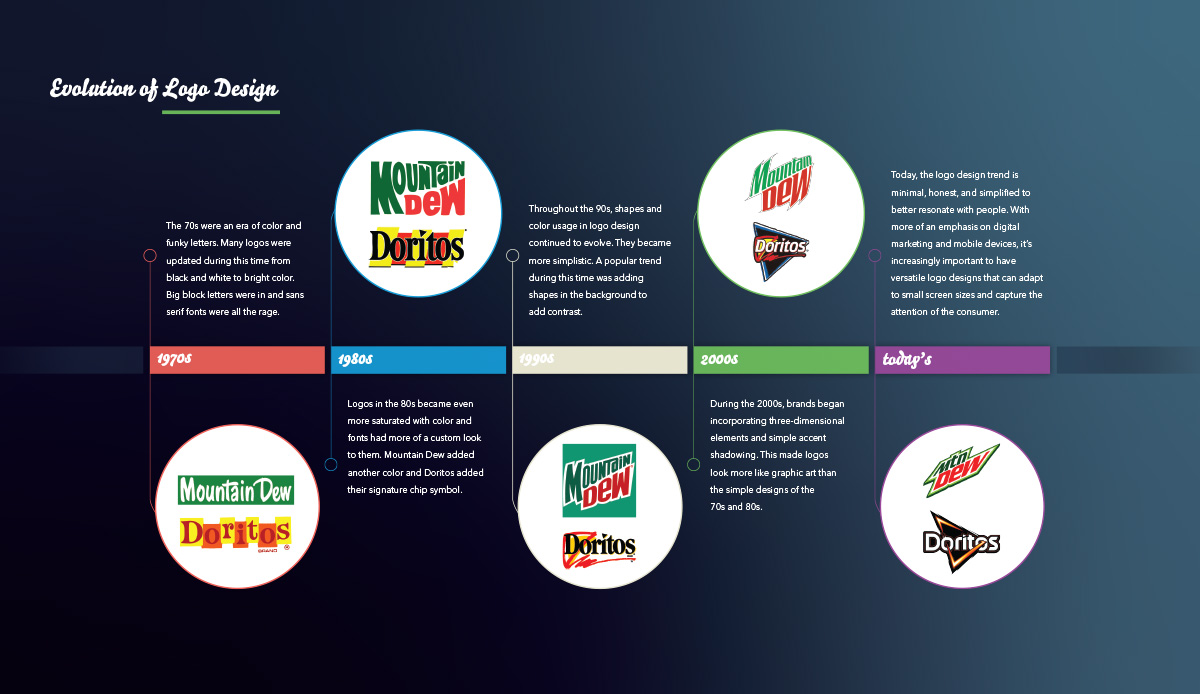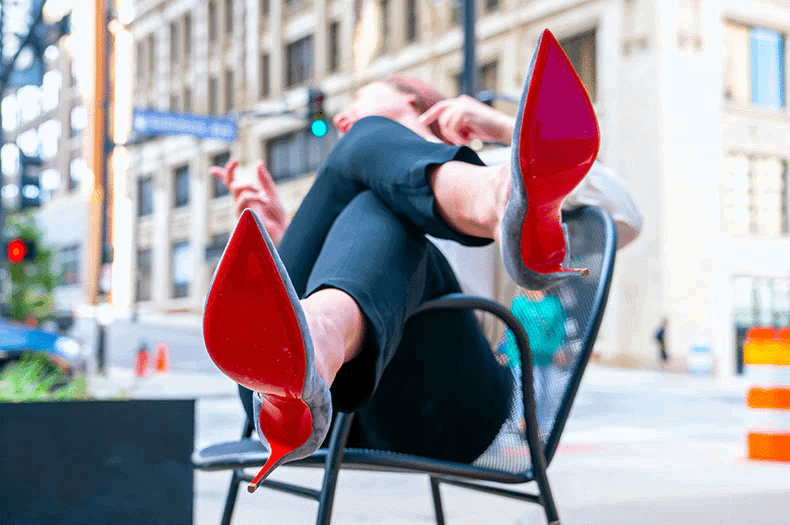Your company logo is the face of your brand. It introduces your brand, sets a precedent for the company’s personality, and provides a visual for the public to recognize and make a connection with.
For that reason, a well-designed logo can contribute to business success, while a substandard company logo can imply amateurishness and turn off potential customers. In this article, we’ll explore what a well-designed logo is, the evolution of the logo, look at logo design best practices, and provide a run-down of logo design tips and guidelines.
Your company logo should appear on everything from letterhead and business cards to your website and advertising. That makes a logo the basic unit of a larger brand identity that includes company fonts, colors and document-design guidelines.
4 reasons a well-designed company logo is important
1. Your logo needs to make a great first impression
Before your salesperson knocks on the door, before your truck pulls up, and even before they call you, potential customers consider the impression of your brand when they decide who to trust. Your business logo design is often one of the first impressions of a brand, so it should match the quality of your product, your sales team, your retail store, and your customer service.
A well-designed logo implies a degree of professionalism and competence that steer potential clients toward your business rather than a competitor with no or substandard logos. You have a competitive edge when people can easily remember your logo.
2. Your logo helps attract new customers
According to a study from Siegel+Gale, logos that are memorable are 13% more likely to catch the attention of consumers, and 7% more likely to make people want to learn more about the brand. By sending the right message to potential customers through the design, color and font of your logo, you catch their attention which gives you the opportunity to engage with them and create a new customer. It is absolutely necessary for a company logo to have a meaning, to present something specific and unique to the subconscious mind of the consumer and set it apart from the rest of the competition.
3. Your logo helps you stand out from your competitors
If you browse the internet and look at company websites, you’ll notice that very few logos stand out from the sea of brands. It’s critical to differentiate yourself from your competition to win the battle for customers. A well-designed company logo will likely help you to stand out, especially if that’s the only visual a customer has to look at. It does not matter the size of your company or business, you have to have a logo that will catch the eye of consumers.
4. Your logo helps you retain loyal customers
The customer journey can be short and relatively simple, especially when it is a returning, loyal customer. A superior customer experience is the key to keeping your customers loyal. There are multiple aspects of that experience, but consider the impact that your logo has on retaining devoted customers.
Is this an image they can see themselves staying loyal to? Will this logo stay in their mind when they are ready to purchase again or when they tell a friend about the product or experience they had? These are things to consider if you want your customers to stay loyal to your brand. Brands like Nike and Apple have strong logo appeal and can be part of the reason they have such brand-loyal customers.
Business logo design best practices
Here are a few basic principles and best practices your logo should follow:
- There should be no more than 1-4 colors
- The logo is scalable, so it looks just as good on a billboard as it does on a business card or mobile device
- Keep it simple – a great logo should have instant impact, rather than layers of complexity
- Visual elements and typography are strong
- The logo gives a sense of meaning to your company
Even the best logos don’t last forever. To stay modern and fresh, it’s important to consider small tweaks to keep your logo relevant. If your company logo design has been successful in the past, you probably don’t need a dramatic shift. Oftentimes a simple change of typeface or a cleaner design can make a logo more modern.
How business logo design has evolved
Why do you think that companies like to change their logo identity or branding? Most of the time, it’s because brands need to maintain relevancy in changing times and keep up with new business logo design trends as they develop, in order to avoid falling behind their current or emerging competitors. It may also be that a company has decided to undergo a rebrand, or they have decided to slowly merge into a new brand. Whatever the reason, a new logo and/or new branding elements must be created to do so.
We as consumers sometimes fail to realize how logo design and brands have dramatically changed over time. Let’s take a look at how logos have evolved throughout the years.
Looking back at company logo design
Logos have been around in one form or another for several thousand years. Think about how the Ancient Egyptians branded animals and walls with hieroglyphs to mark ownership, and how the Ancient Romans and Greeks marked their pottery and art to identify the manufacturer. Many great faiths all over the world adopted symbols for ease of recognition and association to people, ideas, and products.
Branding is by no means a new phenomenon. Branding as we think of it today started evolving in the industrial revolution and the era after World War I but it has existed for nearly 5,000 years, ever since people began trading.
How company logo design has changed
Over the last century, print and advertising have pushed logos into the limelight, and becoming memorable to the consumer is increasingly challenging. Business logo design best practices are constantly changing – let’s take a look at a few major brands and how their logos have evolved over time.

How to design a logo that ensures your brand gets recognized
For small and mid-sized businesses that may lack a substantial advertising budget, it takes some intention to create and maintain public recognition. It can also be easy to jeopardize this recognition with common custom logo design pitfalls.
These three custom logo design tips and guidelines will help you avoid these issues and create a consistent, valuable logo and brand identity.
1. Don’t: Change your logo department-to-department
An issue with logo design consistency can pop up when companies attempt to create subdivision or department logos with independent identities. The temptation is great to give the subdivision its own identity. However, competing logos under the same company risk the company’s consistency in public recognition.
2. Don’t: Rely on icons alone
Unless your brand is as recognizable as Nike, it’s unlikely that the public will recognize it by the icon alone – you should use your company name alongside the icon. Icons are symbols: easily identified, quickly understood, and representative of a larger whole. However, they are often abstract and need a clear relation to a specific entity. This relation can come from years of public recognition; the Nike swoosh, for example, has entered the public lexicon as symbolic of the company. Over time, it has come to stand in place of the company itself. However, most of the time the relationship must be clearly defined through the combination of an icon and company name.
3. Do: Use a similar personality throughout your branding
This tip could really be called “Branding 101.” James Heaton of Tronvig Group defines branding as, “The expression of the essential truth or value of an organization, product, or service. It is a communication of characteristics, values, and attributes that clarify what this particular brand is and is not.”
When designing any digital or print materials associated with your company, it is necessary to use the same tone of voice in your content and design. Your customers will recognize this tone of voice in the same way they recognize the mannerisms of a person.
It’s important to consistently analyze your logo to confirm that it’s in line with modern trends and reflective of your brand’s identity. If it’s time to update or redesign your company logo, consider the value of maintaining your brand recognition. More often than not, mature brands who rebrand themselves do so in a way that maintains brand recognition by going with a variation of the original design.
Remember, trends come and go. But in a fast-changing world, keeping up with competitors and maintaining a modern and relevant brand is key to success.
Make sure your business stands out – contact us for a free custom logo design consultation.


